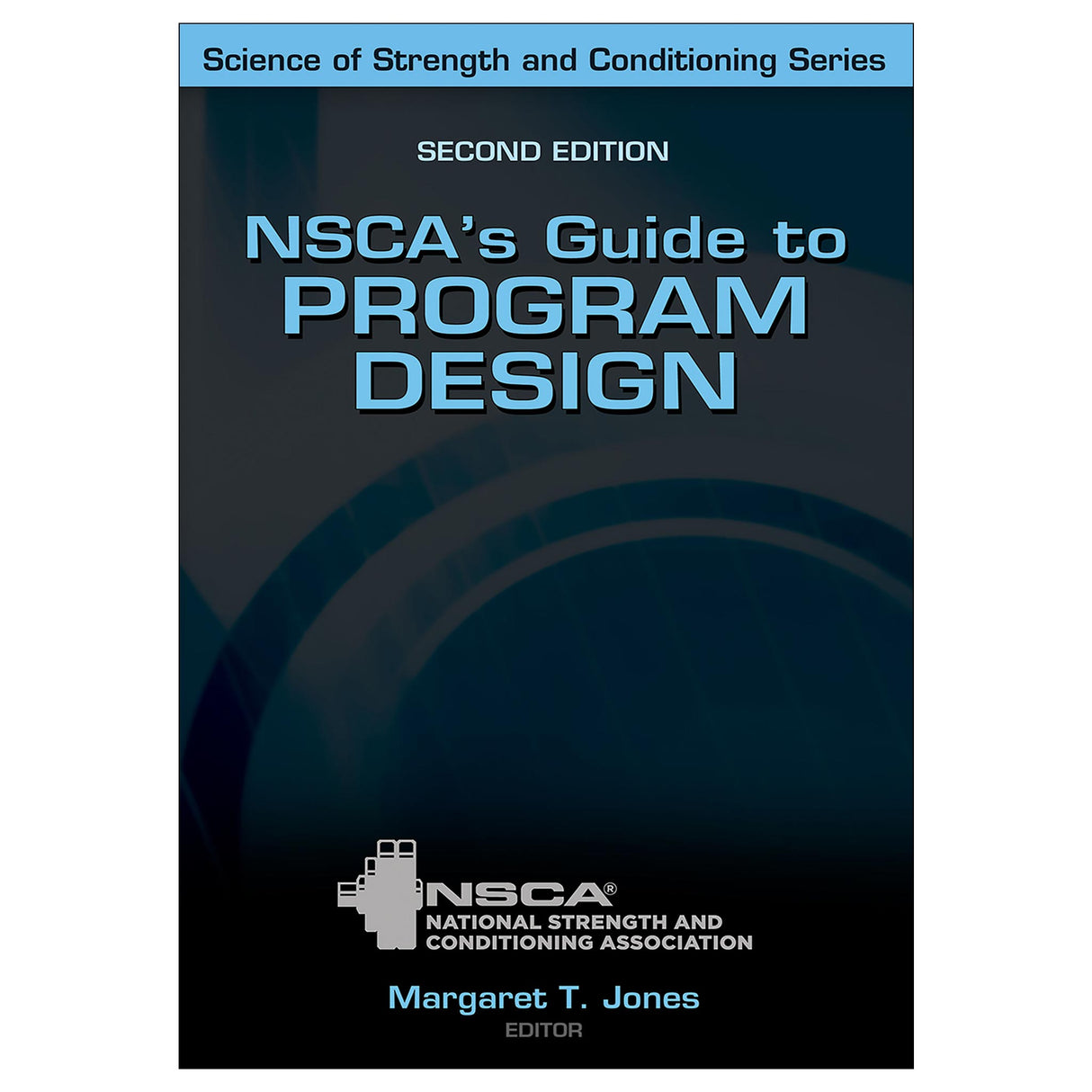NSCA's Guide to Program Design 2nd Edition epub
Author: Margaret T. Jones
$48.00 USD
Access Duration: 10 Years
Created for strength and conditioning professionals, educators, and candidates preparing for certification, NSCA's Guide to Program Design presents an evidence-based framework for athlete assessment strategies and training principles. This authoritative text moves beyond the simple template presentation of program design to help readers understand the reasons and procedures for sequencing training in a safe, sport-specific manner. In addition to programming for resistance training, the book also addresses how to design training programs for power, endurance, agility, and speed.
Straightforward and accessible, NSCA’s Guide to Program Design details the considerations and challenges in developing a program for each key fitness component. It shows you how to begin the process of assessing athlete needs as well as how to select performance tests. Dynamic warm-up and static stretching protocols and exercises are addressed before moving into in-depth programming advice based on a performance goal. The final two chapters help you put it all together with a discussion of training integration, periodization, and implementation.
With sample workouts and training plans for athletes in a variety of sports, technique photos and instructions for select drills, and a sample annual training plan, you will be able to assemble effective and performance-enhancing training programs for all your athletes.
NSCA’s Guide to Program Design is part of the Science of Strength and Conditioning series. Developed with the expertise of the National Strength and Conditioning Association (NSCA), this series of texts provides the guidelines for converting scientific research into practical application. The series covers topics such as tests and assessments, program design, and nutrition.
Earn continuing education credits/units! A continuing education exam that uses this book is also available. It may be purchased separately or as part of a package that includes both the book and exam.
Audience
Strength and conditioning professionals and personal trainers, including NSCA members and those preparing for an NSCA certification. Also for students taking courses in strength and conditioning program design.Chapter 1. Athlete Needs Analysis
Jennifer B. Fields, Andrew R. Jagim, Margaret T. Jones
Chapter 2. Athlete Assessment and Performance Evaluation
Jennifer B. Fields, Andrew R. Jagim, Margaret T. Jones
Chapter 3. Movement Preparation
David J. Heikkinen, N. Travis Triplett
Chapter 4. Resistance Training
Nicholas A. Ratamess
Chapter 5. Power Training
Robert U. Newton, William J. Kraemer, Disa L. Hatfield, Tunde K. Szivak
Chapter 6. Anaerobic Conditioning
Sean Collins
Chapter 7. Aerobic Conditioning
Ludmila Cosio-Lima, Nicole C. Dabbs
Chapter 8. Agility Training
Robert G. Lockie, J. Jay Dawes
Chapter 9. Speed Training
Chelscie K. Greene, Joanette M. Gonzalez, Andrew J. Galpin
Chapter 10. Anatomical Core Training
Ronald L. Snarr, Lawrence W. Judge
Chapter 11. Training Integration and Periodization
G. Gregory Haff, Erin E. Haff
Chapter 12. Training Program Integration and Implementation
Corey Dulak-Sigler, Michael G. Miller
Jones is a fellow of the American College of Sports Medicine (ACSM) and the National Strength and Conditioning Association (NSCA) and is a Certified Strength and Conditioning Specialist. She served on the NSCA Board of Directors from 2017-2020 and was honored as the 2008 NSCA Educator of the Year. In 2014, Jones was awarded a George Mason University OSCAR Mentoring Excellence Award. The 2023 William J. Kraemer Outstanding Sport Scientist, she has authored publications in the areas of human performance and athlete health in peer-reviewed academic journals, and she has presented regionally, nationally, and internationally.
How to customize resistance training programs
Isolation and compound core exercises
All ancillaries are free to adopting instructors through HKPropel.
Instructor guide. Includes chapter outlines, lists of websites for related content, and suggested readings.
Chapter quizzes. Contains ready-made quizzes to assess student comprehension of the most important concepts in each chapter.
Presentation package. Features nearly 250 PowerPoint slides of text, artwork, and tables from the book that can be used for class discussion and presentation. The slides in the presentation package can be used directly within PowerPoint or printed to make handouts for students. Instructors can easily add, modify, and rearrange the order of the slides.
Image bank. Includes most of the figures, content photos, and tables from the text, sorted by chapter. These can be used in developing a customized presentation based on specific course requirements.





